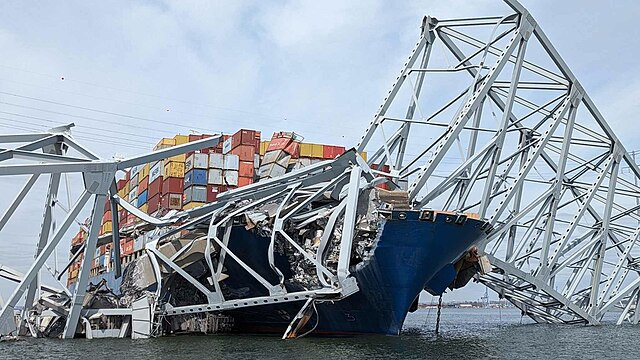Following the tragic collapse of the Francis Scott Key Bridge in Baltimore, a complex web of legal and criminal investigations has emerged, with multiple federal agencies and the city itself seeking accountability for the catastrophic event. On March 26, the bridge crumbled after being struck by the container ship Dali, resulting in the deaths of six construction workers and numerous injuries.
The FBI has opened a criminal investigation into the incident, scrutinizing potential violations of federal maritime law by the vessel's crew and operational failures that may have led to the disaster. The focus is on whether the ship's personnel were aware of any technical or operational issues before it departed from the Port of Baltimore. The probe is particularly interested in the moments leading up to when the ship lost power and collided with the bridge.
In addition to the federal investigation, Baltimore City has initiated legal action against the ship's owner, Grace Ocean Private, and other parties involved in the ship's operation and manufacturing. The city, represented by Mayor Brandon Scott, has partnered with prominent trial law firms to address the immediate and long-term impacts on the community, seeking damages for the profound disruptions caused.
Amid these unfolding events, the National Transportation Safety Board (NTSB) is conducting a separate investigation to determine the specific cause of the collapse and to evaluate the bridge's design and the ship's electrical system, which was manufactured by Hyundai. The preliminary findings are expected to be released soon, providing crucial details about the sequence of events leading up to the crash.
The salvage and recovery efforts are ongoing, with the U.S. Army Corps of Engineers leading operations to clear the wreckage and resume full functionality at the Port of Baltimore. Efforts include removing containers from the Dali to alleviate weight and stabilize the vessel for removal. Meanwhile, makeshift channels have been opened to allow some marine traffic through the area, with plans for a deeper channel to accommodate larger ships.
The legal ramifications of the collapse are intensifying, as the ship's owner and operator have sought to limit their liability under the Limitation of Liability Act of 1851, a move that has prompted swift legal challenges from the city. The owner's preemptive filing suggests an estimation of the ship's value and pending freight at around $1.17 million, a figure that will likely be contested as the city and other parties seek greater compensation.
As the community grapples with the aftermath of this tragedy, the combined efforts of federal and local authorities aim to uncover the causes, ensure justice for the victims, and implement measures to prevent similar incidents in the future. The case continues to draw national attention, highlighting critical issues in infrastructure safety and maritime operations.






